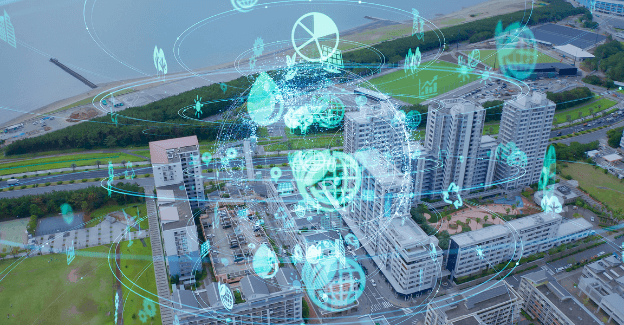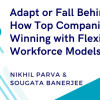Four Considerations to Create and Maintain Sustainable Procurement Practices
With 80% of an organization’s sustainability impact intertwined in its supply chain, businesses will need to identify where they can work with suppliers to realize their corporate purpose ambitions. On average, over 90% of an organization’s carbon footprint sits in “scope 3,” mainly in its supply chain and product lifecycle. Defer that logic across the wider scope of business initiatives, and you uncover a better understanding of where most sustainability lies.
Recently, Unilever announced an initiative to pilot carbon footprint labelling on food. Just think about what that entails and how many suppliers need to jump in to line. We should realize that ambition is going to take a healthy balance of reward and consequence. This is the inevitable direction that we are headed, and of course for the first movers, there is a balance between cost and competitive advantage.
1. Sustainability in Supply Markets is Evolving Fast
Sustainability is now one of the largest business imperatives today. Whether it involves regulations, shareholders, consumers or costs, there are multiple forces pressurizing businesses to act. Cultural change is a huge part of winning the sustainability battle, but internal impact can only go so far when addressing an organization’s total footprint. With the vital contributions of supply chains, many companies are looking to procurement to lead on sustainability strategies.
Suppliers are companies too, and most of these companies have the same challenges and ambitions as traditional businesses. Some may be ahead and some behind. There is a lot of innovation happening in supply markets with suppliers and their competitors. This means that opportunities exist for quick fixes, but this also makes some goals more infinite to achieve. Delivering on sustainability means orchestrating supplier solutions.
For procurement, understanding markets is vital to deliver on a company’s traditional and new values, as is positioning the supplier contribution in the value chain. There will be opportunities to set standards and drive compliance, but there will also be a need to support small businesses, develop critical suppliers and collaborate on the harder-to-solve business problems.
The solution-to-purpose goals can be found with your suppliers. When you read about supplier collaboration and innovation, these are areas where it must happen first to succeed.
2. Sustainability Will Fail Without Procurement’s Involvement
Procurement is becoming the face of sustainability within many organizations around the world, but there is also a prevailing feeling that procurement might miss its chance if positive action is not taken now by CPO’s. Organizations are becoming more purposeful and procurement can seize the chance to be a driver in areas of business beyond just cost savings.
Most of the work to become more sustainable is done within the supply chain. A majority of future innovation is in the supply chain and an organization’s commercial processes are owned and governed by procurement (including requisitioning, tendering, supplier management, etc.). Procurement aligned with purpose is a critical success factor for a sustainability program. Commercial processes must encourage and sometimes force the right choices and behaviors.
However, the real prize is moving upstream into strategy and supplier collaboration. For most organizations, big ticket sustainability impact (i.e., where they are most exposed and can make the biggest difference) can be found in critical operations. That might be energy, manufacturing, agriculture or water. Generally, business critical activities are intertwined with one if not multiple supplier partners.
There will be a moment of reflection here for many business leaders, determining which type of procurement function they have. Is it rich in process and digital function? Is it deep in expertise for a supply chain function? Is it a highly networked innovation focused function? The reality is that you might need all three to reach world class maturity in sustainability.
3. Sustainability is a Business Purpose, Not a Procurement Initiative
While we champion procurement as an owner and driver of sustainability, the corporate purpose is as much a cultural shift as it is a business shift. Regulation and investor demands will undoubtedly lead organizations towards a style of sustainability that is more in tune with ESG (environmental, social, governance) measurement and management.
However, successful sustainability programs also rely on a cultural shift, uniting the business behind purpose and creating a new definition of business value. How many times have we heard the debate around savings versus value, and the different types of values that stakeholders perceive? If you cannot align with a stakeholder on today’s definitions of value, how are you planning to layer in the benefits of purpose that may result in change?
Uniting stakeholders, suppliers and commercial teams behind common priorities will create collaborative relationships, and most likely, the best outcomes. This is an education piece that needs to frame “purpose” as a “measure of value” that is commonly adopted and understood. In the short or long term, it can be evaluated alongside other value drivers, or as a hurdle to working with a supplier. Purpose initiatives may force a business into new and different programs, which may cost more or less, but the underlying business value will shine through.
It also helps that corporate purpose runs through the DNA of a business. Sustainability programs will falter or fail if what is being requested of suppliers is not also embedded in the culture and behaviors of those at the very top. Many chief procurement officers (CPOs) see sustainability as a key tool to attract and retain top talent, as well as foster a culture of innovation.
4. Technology is an Essential Part of the Answer
Technology won’t deliver you a world-class sustainability program, but you can’t run a world-class sustainability program without technology. The procure-tech market is rallying around sustainability and new solutions in procure-tech are quickly emerging. There is a vast array of solutions when it comes to monitoring, measuring and managing. But, with no holistic tech solution, knitting these needs together is difficult and costly for business leaders.
Organizations seeking to set up world-class sustainability programs will be delivering on long-term visions, and in many cases, pioneering new ideas and solutions that are yet to reach the mass market. This is exciting time for “the human” as we solve complex challenges collaboratively with our supplier partners using some brilliant tech to do it (speed, scale and an affordable price).
Aside from the certification platforms, there are few “utilities” in this space. Pioneering can be expensive, which means that a lot of the future advancements will be either driven by those with the biggest exposure, those with the biggest budgets, or those with the most innovative and collaborative mindsets.
Procurement is Here to Help, So Make it Count
As businesses look to build back better, sustainability is firmly on the agenda. Market pressures that test a company’s green intentions, low cost, less sustainable choices are not going away, which is why collaboration is so important.
This next driver toward business value involves a plethora of commercial strategies. It is time to redefine value and make procurement count.








